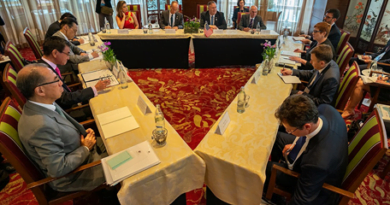ITEC Programme- Indian Technical and Economic Cooperation Programme
Contents
About ITEC Programme:
- Indian Technical and Economic Cooperation Programme (ITEC Programme) is a bilateral assistance programme run by the Government of India.
- ITEC Programme was launched in 1964 by the Ministry of External Affairs.
- The ITEC Programme is fully funded by the Government of India.
- ITEC was an important part of India’s attempt to contributing to South-South cooperation.
- It is a demand-driven, response-oriented programme that focuses on addressing the needs of developing countries through innovative technological cooperation between India and the partnering nation.
- Along with its corollary the Special Commonwealth Assistance for Africa Programme, ITEC covers 158 countries across Asia, Africa, Latin America, Central and Eastern Europe, and several Pacific and Caribbean nations.
- Since its inception, the programme has spent over US$ 2 billion and benefited thousands of students and professionals from around the globe and annual expenditure on the programme has averaged US$ 100 million per annum in recent years.
Components of ITEC Programme:
- Training (civilian and defence) in India of nominees from ITEC partner countries;
- Projects and project related activities such as feasibility studies and consultancy services;
- Deputation of Indian experts abroad;
- Study Tours;
- Gifts/Donations of equipment at the request of ITEC partner countries; and
- Aid for Disaster Relief.
What is South-South Cooperation?
The countries of the world are classified on the basis of development. Thus, we have developed and rich countries, developing countries and finally Least Developed Countries. If we carefully observe, the developing and Least Developed Countries (LDCs) are located in the Southern Hemisphere of the globe, whereas developed countries are located in the Northern Hemisphere. Due to this geographical fact, scholars have termed developed countries as ‘North’ and developing countries and LDCs as `South’.
Therefore, when the countries of the South or developing countries cooperate in various fields, it is known as South-South Cooperation or Dialogue. Thus, the term South-South Cooperation means the process of cooperation among the developing countries in the economic field and other areas. At present, South-South Cooperation is promoted as a viable strategy by developing countries for their development and progress.
Conversely, when the cooperation and dialogue between the developed North and developing South takes place, it is known as North-South Dialogue. The South-South Cooperation has been adopted by the Non-Aligned Movement as the basic principle of its economic approach to achieve the dream of collective self-reliance among developing countries. Though the term South-South Cooperation emerged in the 1970s, the idea has been on the agenda of NAM for a long time. It is also a basic approach of India’s economic diplomacy towards, developing countries and LDCs.
Importance of South-South Cooperation
There are a number of factors giving rise to the idea of South-South Cooperation and making it a desirable option for developing countries:
- The developed countries and developing countries are at a different scale of the development process. Hence, their priorities, needs and development concerns are different from each other. They need a collective approach to deal with the problems and issues of global economic order, which affect them.
- The developing countries, situated nearly at the same scale of the development process have many commonalities to share. These similarities emerge from their common experience of colonialism and economic exploitation. They all share the common problems of poor economic infrastructure, illiteracy, unemployment, poverty, hunger, lack of technology and so on. Thus, a common past, a common present and a common future bring them together for cooperation and a common approach to development issues.
- After World War II, the developing countries tried to move on the path of self-reliance in order to reduce their dependence on their colonial masters. Since the goal of self-reliance was difficult to be realized at an individual level, they opted for the goal of collective self-reliance. South-South Cooperation was promoted to realize this objective.
- As the signs of economic interdependence among nations became more pronounced after World War II, the UN, NAM and other international bodies pleaded for development assistance from developed countries to developing and poor countries. Such assistance was provided in the name of Official Development Assistance (ODA) by the developed countries, which was to be 0.7 per cent of their GDP; Similarly, in 1974, the Un General Assembly passed the resolution of New International Economic Order or NIEO, which aimed to establish a global economic order based on the principle of equity, fairness and justice in favour of developing countries. However, the progress towards NIE0 and the ODA was tardy. Moreover, the ODA and transfer of technology from rich countries to poor countries were riddled with many terms and conditions not suitable to developing countries. Thus, as a way out of this impasse, the idea of South-South Cooperation was viewed as a better option and a viable choice.
Source: ITEC
You can find many articles on INTERNATIONAL RELATION (part of GS II) in our website. Go through these articles share with your friends and post your views in comment section.
Discover more from Simplified UPSC
Subscribe to get the latest posts sent to your email.


